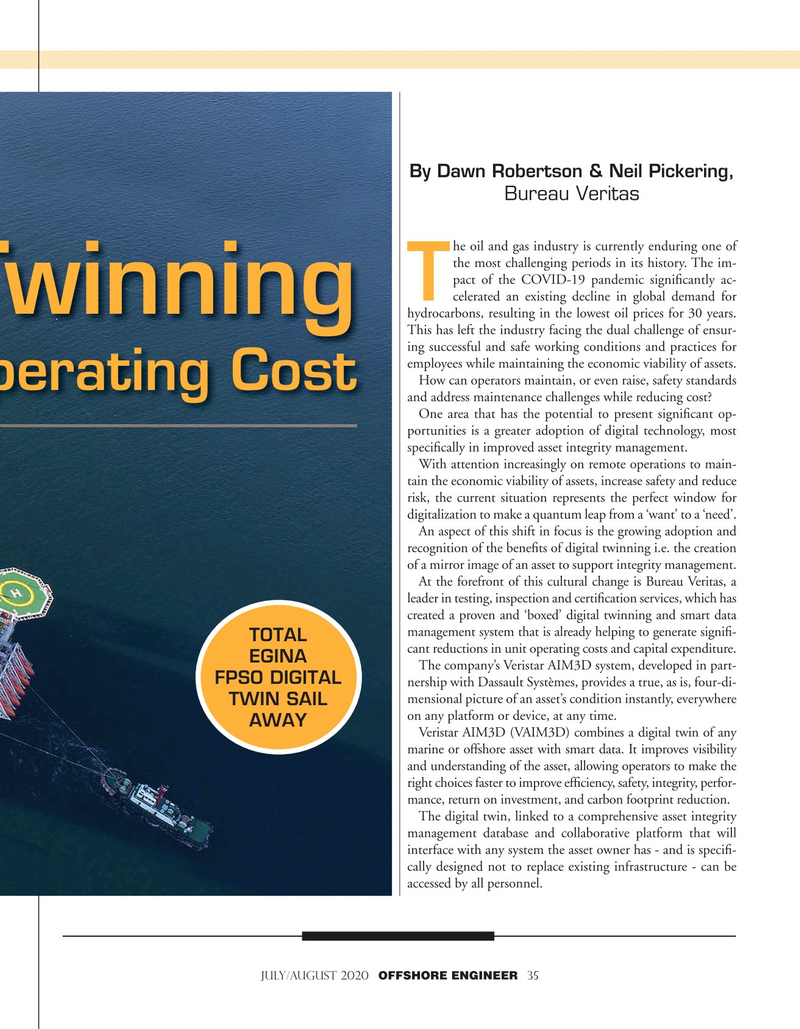
Page 35: of Offshore Engineer Magazine (Jul/Aug 2020)
Read this page in Pdf, Flash or Html5 edition of Jul/Aug 2020 Offshore Engineer Magazine
By Dawn Robertson & Neil Pickering,
Bureau Veritas he oil and gas industry is currently enduring one of the most challenging periods in its history. The im- pact of the COVID-19 pandemic signi?cantly ac-
T celerated an existing decline in global demand for
Twinning hydrocarbons, resulting in the lowest oil prices for 30 years.
This has left the industry facing the dual challenge of ensur- ing successful and safe working conditions and practices for employees while maintaining the economic viability of assets.
How can operators maintain, or even raise, safety standards perating Cost and address maintenance challenges while reducing cost?
One area that has the potential to present signi?cant op- portunities is a greater adoption of digital technology, most speci?cally in improved asset integrity management.
With attention increasingly on remote operations to main- tain the economic viability of assets, increase safety and reduce risk, the current situation represents the perfect window for digitalization to make a quantum leap from a ‘want’ to a ‘need’.
An aspect of this shift in focus is the growing adoption and recognition of the bene?ts of digital twinning i.e. the creation of a mirror image of an asset to support integrity management.
At the forefront of this cultural change is Bureau Veritas, a leader in testing, inspection and certi?cation services, which has created a proven and ‘boxed’ digital twinning and smart data management system that is already helping to generate signi?-
TOTAL cant reductions in unit operating costs and capital expenditure.
EGINA
The company’s Veristar AIM3D system, developed in part-
FPSO DIGITAL nership with Dassault Systèmes, provides a true, as is, four-di- mensional picture of an asset’s condition instantly, everywhere
TWIN SAIL on any platform or device, at any time.
AWAY
Veristar AIM3D (VAIM3D) combines a digital twin of any marine or offshore asset with smart data. It improves visibility and understanding of the asset, allowing operators to make the right choices faster to improve ef?ciency, safety, integrity, perfor- mance, return on investment, and carbon footprint reduction.
The digital twin, linked to a comprehensive asset integrity management database and collaborative platform that will interface with any system the asset owner has - and is speci?- cally designed not to replace existing infrastructure - can be accessed by all personnel.
JULY/AUGUST 2020 OFFSHORE ENGINEER 35

 34
34

 36
36